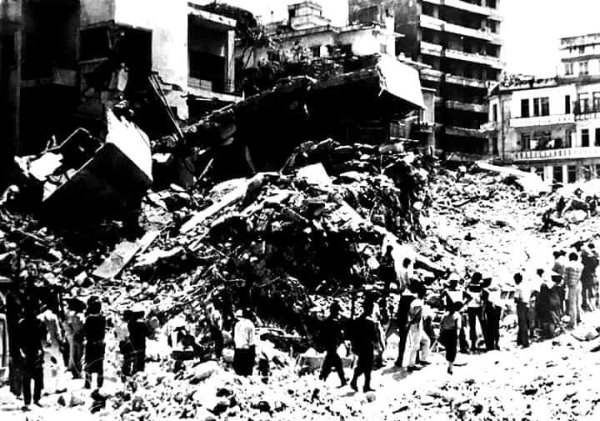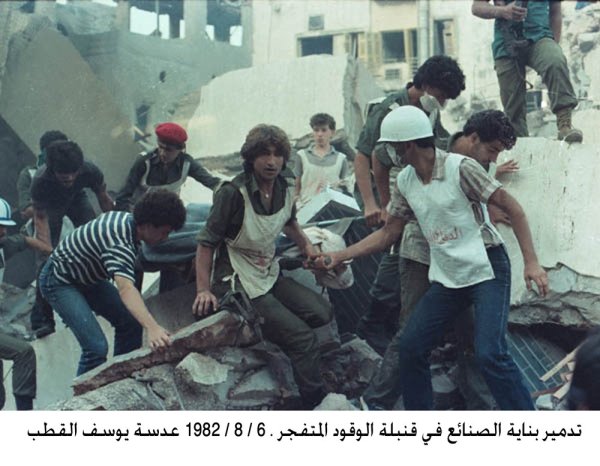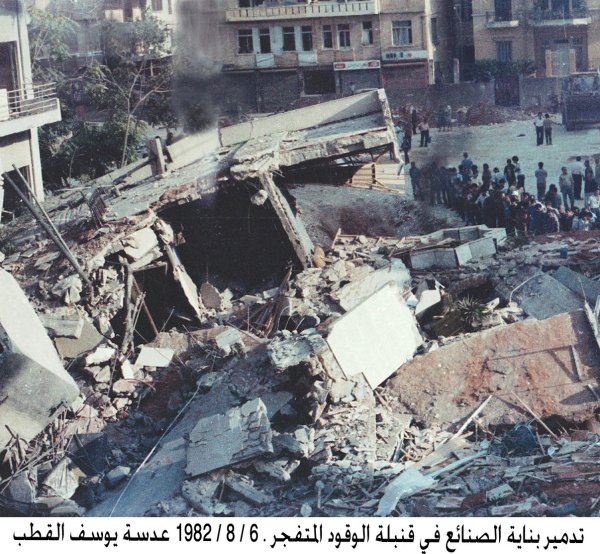
On August 6, 1982, at exactly 1:55 PM, Israeli planes bombed the Akkar building in the Alsana'ie area of Beirut, which consisted of seven floors, resulting in the complete destruction of the building. The attack led to the death and injury of 250 residents, most of whom were displaced from the Dbyah and Jisr al-Basha camps.
Israeli aircraft used vacuum missiles that had not been used before in the Lebanon war. It was observed that the sound of the missile was not heard far from the targeted building, unlike the strong vibration that exceeded the range of sound resulting from the explosion.
The target of the bombing of the Akkar building was to assassinate Yasser Arafat (leader of the Palestinian Liberation Organization), known as "Abu Ammar," as the Israelis believed he would be present there. They followed one of his guards who brought his family (his father, mother, wife, and four children) to the building for protection. However, all members of his family were killed in the bombing (as reported in the Kuwaiti newspaper Al-Qabas on August 7, 1982).
Mahmoud Darwish writes about this massacre in his book "Memory to Forget":
"The Alsana'ie area of Beirut garden witnessed one aspect of Judgment Day. Hundreds of frightened people surrounded a massive stone coffin. The stone bears the weight of metals under a sun veiled in all shades of ash. We hide among the crowds to find a place to look behind the crowded shoulders, behind the human fence tense with fear and anger, and we see: a building swallowed by the depths of the earth."
Amjad Nasser also wrote about it in his book "Beirut is Small as the Palm of the Hand: Diaries from the Siege of 1982":
"The displaced people who fled from death were buried under the rubble by death itself. The entire area is crowded with displaced people lying on the ground in the Souk al-Sinaa garden. There is a whole camp in the garden, a new camp for the children of the old camps."








التعليقات - 1